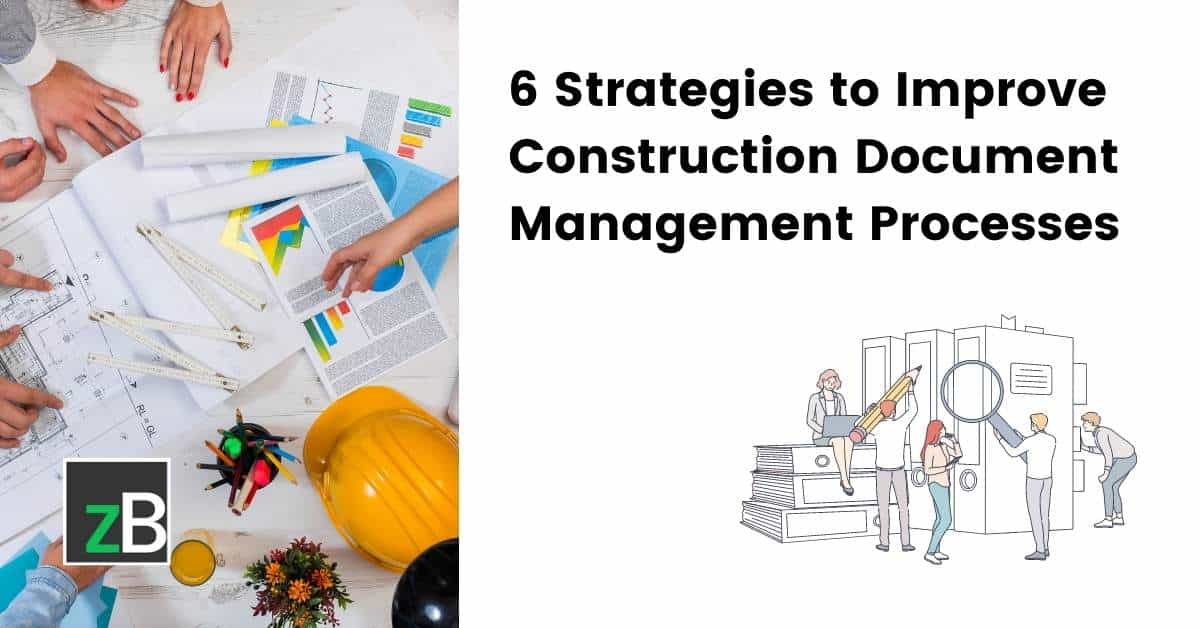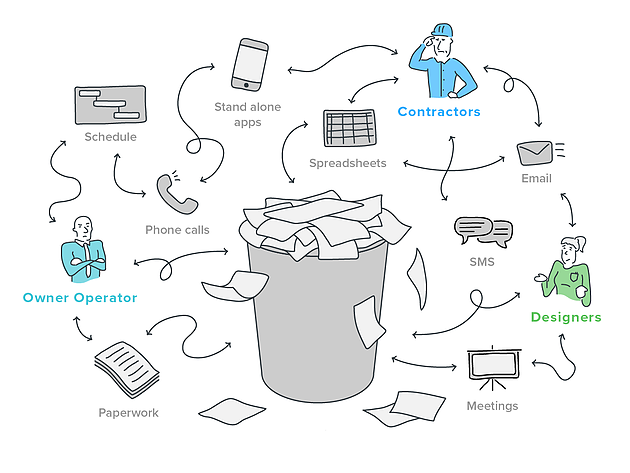Getting Seamless Project Delivery: Architect's Comprehensive Method to Building Record Administration
In the realm of style and construction, the precise orchestration of task components is vital to success. One critical element typically underestimated is the management of building and construction records, which acts as the backbone of every job. construction document management. As architects navigate the complexities of style, implementation, and coordination, a comprehensive strategy to record administration becomes a linchpin for accomplishing smooth task shipment. By studying the subtleties of this process, uncovering the important components, and discovering ingenious technical options, engineers unveil a path towards heightened efficiency and partnership within project teams. The blend of precision, cooperation, and innovation develops the foundation of an effective architectural undertaking, boosting the importance of an organized record administration strategy.
Value of Building Record Management
Efficient building paper administration plays a critical role in making sure project success by assisting in seamless interaction and company throughout the building process. By preserving accurate and updated building documents, designers can efficiently connect with service providers, subcontractors, and other stakeholders entailed in the job. These papers work as a reference point for all celebrations, making certain that everybody is working from the exact same collection of details and lowering the likelihood of errors or misunderstandings.
In addition, construction file monitoring helps engineers remain organized by supplying a centralized area for all project-related information, including drawings, specifications, agreements, and document. When needed, this organization improves the decision-making procedure and permits for quick accessibility to essential project information. In addition, appropriate file monitoring can boost project effectiveness, minimize pricey delays, and ultimately result in the effective conclusion of building tasks. Architects that prioritize building paper management set a solid foundation for project success and show a dedication to delivering premium outcomes.
Crucial Element for Reliable Documents

Developing standard layouts and methods makes sure consistency throughout all job files. Carrying out a robust document administration system that allows for version control, accessibility restrictions, and audit routes greatly improves the company and security of task paperwork. By including these vital elements into building file monitoring methods, designers can simplify procedures, reduce errors, and eventually contribute to the effective distribution of projects.
Using Innovation for File Company
Leveraging sophisticated digital devices and software program systems contributes in improving the company and ease of access of building and construction paperwork. Building companies can streamline their document administration processes by implementing specialized software program designed for the building and construction market. These devices offer attributes such as variation control, cloud storage space, and collaborative editing capacities, enabling team participants to service papers simultaneously and making certain everybody has access to the most updated info.
One trick advantage of utilizing technology for paper organization is the ability to develop a centralized database for all project-related documents. By saving documents in a safe digital setting, designers can quickly look, recover, and share details with stakeholders, decreasing the threat of version conflicts or misplaced data. Furthermore, advanced software application solutions typically incorporate metadata tagging and indexing functionalities, allowing individuals to categorize files successfully and recover them quickly when needed.
Joint Approaches With Project Groups
To maximize project end results, architects must embrace collective techniques when functioning with project teams to ensure seamless interaction and sychronisation throughout the building and construction process. Partnership with job groups is essential for engineers to successfully handle building jobs. construction document management. By fostering open communication and teamwork amongst all stakeholders, architects can improve decision-making processes, address prospective problems proactively, and make sure that every person is lined up with the job goals
Architects need to establish clear lines of interaction with engineers, service providers, clients, and other crucial staff member from the outset of the job. Regular conferences, progress updates, and comments sessions must be set up to keep everybody educated and engaged. Using collaborative task monitoring tools can also assist in real-time info sharing and paper cooperation, boosting transparency and performance.

Ideal Practices for Record Version Control

Conclusion
In verdict, reliable building paper monitoring is critical for attaining smooth project distribution (construction document management). It is vital for architects to execute best techniques in paper management to successfully navigate the complexities of building tasks.
Effective building and construction paper management plays a vital duty in ensuring project success by promoting seamless interaction and company throughout the building and construction process. Additionally, appropriate file monitoring can enhance task effectiveness, decrease costly delays, and eventually lead to the successful conclusion of construction tasks.To maximize task results, architects have to embrace collaborative approaches when working with task groups to make sure smooth communication and control throughout the building and construction process. Cooperation with task groups is important for architects to properly manage construction jobs.In the world of collective building project administration, next keeping exact control over record variations stands as a vital practice for making sure job stability and cohesion.